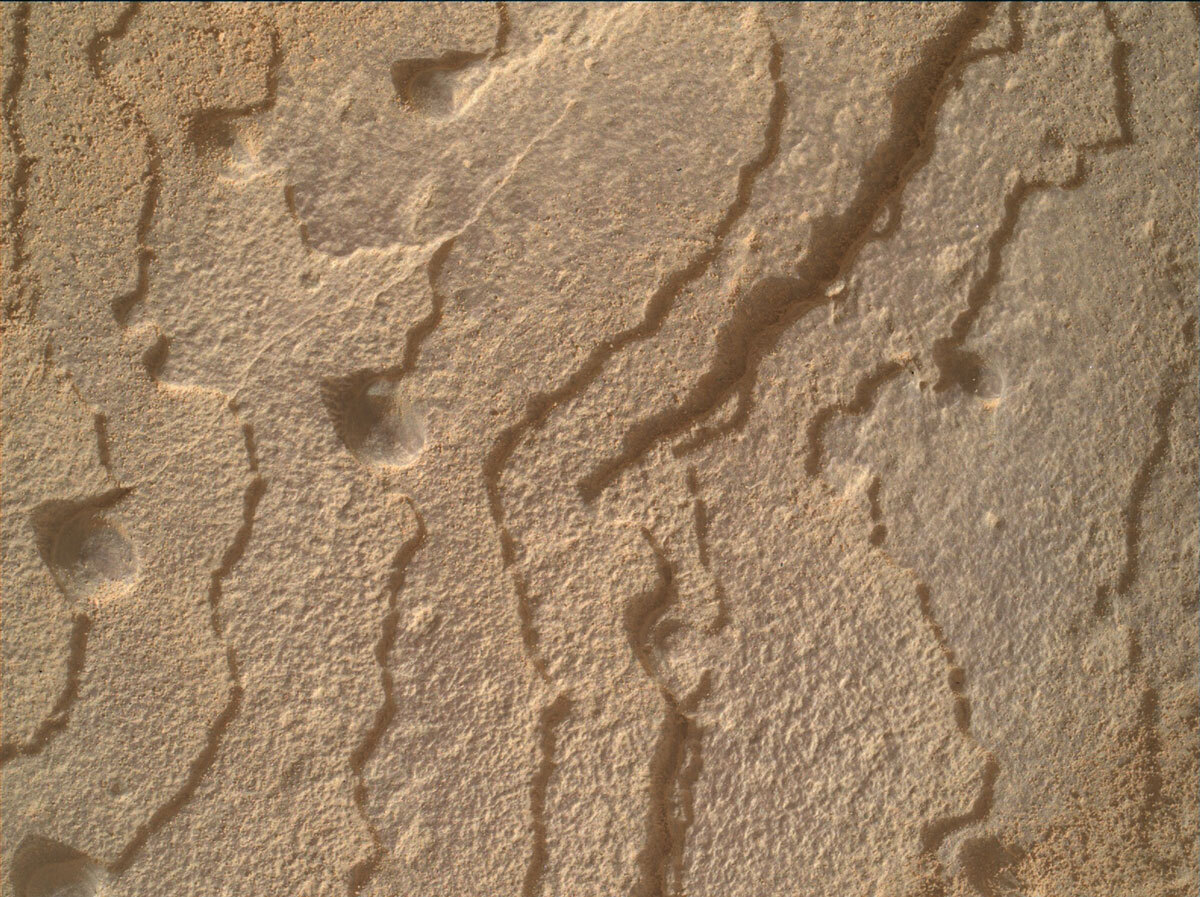2 min read

Over the weekend, Curiosity took compositional measurements of the “Canaima” bedrock target in order to determine if the target merits collecting drilled sample. Concurrently, the engineering team took preload measurements to determine the stability of the rock for drilling. This morning the science and engineering teams reviewed the information downlinked and were excited to approve moving forward with drilling Canaima.
For today’s plan, the rover planners carefully sequenced the motions the rover’s arm and turret will make to drill to approximately 35 mm depth, creating a ~1.6 cm diameter hole (a little less than the diameter of a US dime). This seemingly small volume of drilled sample will be enough to ingest in our internal analytical laboratories to identify mineralogy with CheMin and search for organics with SAM later this week, should the team choose to!
These future measurements with CheMin and SAM are very power intensive. Even though we are not certain we will perform them, today’s team was careful to conserve power in the event that we will. We therefore limited today’s plan to drilling activities and our regular environmental monitoring measurements and extra imaging to monitor for changes in dust levels in our atmosphere.
Looking forward to waking up tomorrow morning to our 36th drill hole!
Written by Elena Amador-French, Science Operations Coordinator at NASA's Jet Propulsion Laboratory







